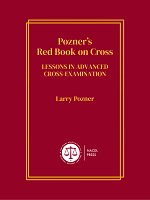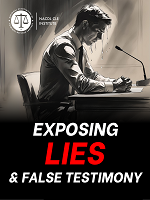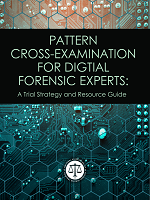- The Ohio Constitution provides additional protection from cruel and unusual punishment.
State Constitution
Art. 1, §9. Bail; cruel and unusual punishments:
All persons shall be bailable by sufficient sureties, except for a person who is charged with a capital offense where the proof is evident or the presumption great, and except for a person who is charged with a felony where the proof is evident or the presumption great and where the person poses a substantial risk of serious physical harm to any person or to the community. Where a person is charged with any offense for which the person may be incarcerated, the court may determine at any time the type, amount, and conditions of bail. Excessive bail shall not be required; nor excessive fines imposed; nor cruel and unusual punishments inflicted.
The general assembly shall fix by law standards to determine whether a person who is charged with a felony where the proof is evident or the presumption great poses a substantial risk of serious physical harm to any person or to the community. Procedures for establishing the amount and conditions of bail shall be established pursuant to Article IV, Section 5(B) of the Constitution of the state of Ohio.
Sentencing Statutes
Felony sentencing factors
In arriving at a sentence, a court must consider a number of potential aggravating factors, including:
-
The physical or mental injury suffered by the victim of the offense due to the conduct of the offender was exacerbated because of the physical or mental condition or age of the victim.
-
The victim of the offense suffered serious physical, psychological, or economic harm as a result of the offense.
-
The offender held a public office or position of trust in the community, and the offense related to that office or position.
-
The offender's occupation, elected office, or profession obliged the offender to prevent the offense or bring others committing it to justice.
-
The offender's professional reputation or occupation, elected office, or profession was used to facilitate the offense or is likely to influence the future conduct of others.
-
The offender's relationship with the victim facilitated the offense.
-
The offender committed the offense for hire or as a part of an organized criminal activity.
-
In committing the offense, the offender was motivated by prejudice based on race, ethnic background, gender, sexual orientation, or religion.
-
If the offense is a violation of section 2919.25 or a violation of section 2903.11, 2903.12, or 2903.13 of the Revised Code involving a person who was a family or household member at the time of the violation, the offender committed the offense in the vicinity of one or more children who are not victims of the offense, and the offender or the victim of the offense is a parent, guardian, custodian, or person in loco parentis of one or more of those children.
Ohio Rev. Code § 2929.12.
A court must consider a number of potential mitigating factors, including:
- The victim induced or facilitated the offense.
- In committing the offense, the offender acted under strong provocation.
- In committing the offense, the offender did not cause or expect to cause physical harm to any person or property.
- There are substantial grounds to mitigate the offender's conduct, although the grounds are not enough to constitute a defense
Ohio Rev. Code § 2929.12.
A court must consider factors that would make it more likely that the offender would commit future crimes:
-
At the time of committing the offense, the offender was under release from confinement before trial or sentencing, under a sanction imposed pursuant to section 2929.16, 2929.17, or 2929.18 of the Revised Code, or under post-release control pursuant to section 2967.28 or any other provision of the Revised Code for an earlier offense or had been unfavorably terminated from post-release control for a prior offense pursuant to division (B) of section 2967.16 or section 2929.141 of the Revised Code.
-
The offender previously was adjudicated a delinquent child pursuant to Chapter 2151. of the Revised Code prior to January 1, 2002, or pursuant to Chapter 2152. of the Revised Code, or the offender has a history of criminal convictions.
-
The offender has not been rehabilitated to a satisfactory degree after previously being adjudicated a delinquent child pursuant to Chapter 2151. of the Revised Code prior to January 1, 2002, or pursuant to Chapter 2152. of the Revised Code, or the offender has not responded favorably to sanctions previously imposed for criminal convictions.
-
The offender has demonstrated a pattern of drug or alcohol abuse that is related to the offense, and the offender refuses to acknowledge that the offender has demonstrated that pattern, or the offender refuses treatment for the drug or alcohol abuse.
-
The offender shows no genuine remorse for the offense
Ohio Rev. Code § 2929.12.
The court must consider factors that would make it less likely that an offender would commit future crimes:
- Prior to committing the offense, the offender had not been adjudicated a delinquent child.
- Prior to committing the offense, the offender had not been convicted of or pleaded guilty to a criminal offense.
- Prior to committing the offense, the offender had led a law-abiding life for a significant number of years.
- The offense was committed under circumstances not likely to recur.
- The offender shows genuine remorse for the offense
Ohio Rev. Code § 2929.12.
Case Law
General
A trial court may use an individual’s juvenile record in determining that an offender is likely to reoffend, thereby imposing a maximum sentence. State v. King, 3d Dist., No. 4-04-33, 2005 -Ohio- 3760, at ¶24.
Blakely protections are not implicated under the state’s sentencing scheme. State v. Pearce, 6h Dist. No. OT-04-048, 2005 -Ohio- 3361, at ¶41; State v. Curlis, 6th Dist. No. WD-04-032, 2005 -Ohio- 1217.
Proportionality
A punishment violates the state constitution when it is “so greatly disproportionate to the offense as to shock the sense of justice in the community.” State v. Chaffin, 30 Ohio St.2d 13 (1972).
A sentence will be found cruel and unusual under the state constitution in the rare circumstances when it “would be considered shocking to any reasonable person.” In re C.P., 131 Ohio St.3d 513, 529 (2012). The Ohio constitution provides citizens with protections that are independent of the Eighth Amendment. In re C.P.. 131 Ohio St.3d at 529.
Charging a motorist with involuntary manslaughter after she committed a series of minor traffic infractions that resulted in the death of two other motorists does not shock the sense of justice in the community. State v. Weitbrecht, 86 Ohio St.3d 368, 370 (1999).
Leading Court Discussions of Graham and Miller
State v. Long, 138 Ohio St.3d 478 (March 12, 2014) (When imposing LWOP, the court must separately consider the youth of a juvenile as mitigating factor and group sentencing of three that included one juvenile defendant violates that requirement. Court record must show the mitigating factor, in sentencing memorandum and/or sentencing hearing; Wyoming factors, which list the factors court may consider when imposing LWOP is not required by Ohio court and judges retain broad discretion to determine how much weight to give each factor.)
In re C.P., 2012-Ohio-1446, 131 Ohio St. 3d 513, 967 N.E.2d 729 (April 3, 2012) (Mandatory, lifetime sex-offender registration and notification requirements, including notification on the Internet violate Eighth Amendment to the extent it imposes such requirement on juvenile offenders.)
Severe Sentences
Court upheld mandatory two-year sentence for escape; man was arrested after he failed to report to his parole officer on four occasions over a two-week period. State v. Myers, 2007 WL 1536827, *3 (Ohio App.2nd 2007).













